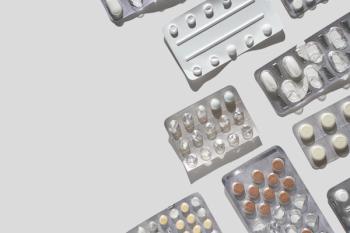
Drug verification becomes a reality
Technology now exists that can verify the contents of a drug vial or syringe, benefiting retailers, hospitals, and manufacturers.
What is it worth to verify the contents of a drug vial or syringe? $20,000? $24,000? $100,000? The technology is here and those are the price points for retail, hospital, and manufacturer/wholesale devices.
"The idea is to verify that the right pill is in the right bottle, or the right drug and concentration in the right IV bag," said medication technology consultant Mark Neuenschwander, president of The Neuenschwander Company in Seattle, Wash. "Molecular screening technologies like X-ray diffraction and spectrometry are being used. It's a question of time and cost, and people knowing that these devices are available."
Jim Stevenson has known about enhanced photoemission spectroscopy (EPS) for years. He was the principal investigator for a 2005–2006 study of a tabletop EPS device called Valimed to verify high-risk drugs compounded at the University of Michigan Hospitals and Health Centers. Stevenson is also director of pharmacy services at the university's health system.
Valimed is made by CDEX, based in Tucson, Ariz. A small aliquot (fractional portion) of the compounded solution is inserted into the device and illuminated. The light excites molecules in the solution, which fluoresce to form a spectrographic signature that is unique for every drug and concentration. The sample signature is compared to a library signature; if the signatures match, the test sample is verified. If the signatures do not match, the sample is rejected. Each unit costs $24,000, or $2.50 per sample on a pay-per-use basis.
Device limitations
"Drug validation is an area I hope will develop," Stevenson said. "We use Valimed to check 10 high-risk meds compounded in our children's hospital and in our central IV clean room. But the device has some limitations."
One problem is a limited library of about 190 drugs and concentrations. Electrolytes are not in the library, so products accidentally compounded with hypertonic solutions can escape detection. And chemotherapeutic agents cannot be checked.
"These types of devices will help catch common errors like heparin concentrations," said Christopher Jerry, president of the Emily Jerry Foundation. His daughter, Emily, was killed by a chemotherapeutic agent compounded with hypertonic sodium chloride ["RPh second victim in Ohio drug error," Jan. 2010]. "If you have products like Valimed that can validate the correct drug mixture, it makes sense to get them into hospitals as soon as possible."
Centice Corporation, based in Morrisville, N.C., uses spectrography to verify oral solids at the point of dispensing. The user scans a drug-vial bar code to identify the target drug, then places the vial inside a countertop Pass Rx unit. Spectrography and image recognition verify the product in the container against a library of 23,000 drugs and formulations.
"Pass Rx provides our pharmacy with an invaluable competitive differentiator - absolute peace of mind that patients are getting their exact prescription," said Stan Haywood, owner of Prevo Drug in Asheboro, N.C. "Our No. 1 priority is patient safety."
Spectrography requires a clear view of the substance to be analyzed. That's where energy dispersive X-ray diffraction (ECXD) comes in. XStream Systems in Bowling Green, Ohio, makes a $100,000 device that penetrates sealed containers to identify crystalline materials inside, including pharmaceuticals.
Manufacturers can verify bulk ingredients and wholesalers can verify finished drug products. The promise is an end to counterfeit and adulterated products in the supply chain.
"Track-and-trace can verify the package," said Patricia Earl, XStream vice president, business development. "But a bar code on the outside of a carton doesn't tell you what's inside."
Newsletter
Pharmacy practice is always changing. Stay ahead of the curve with the Drug Topics newsletter and get the latest drug information, industry trends, and patient care tips.











































































































































































































